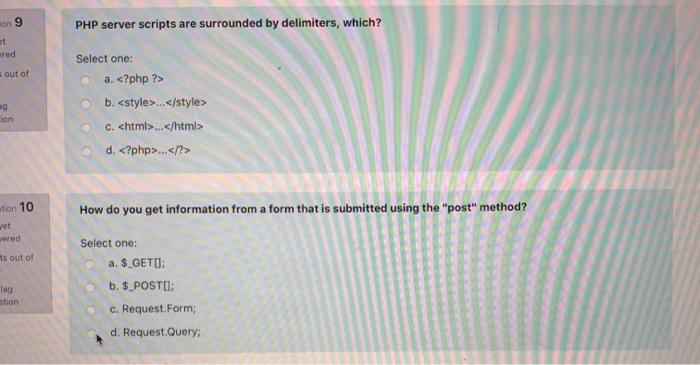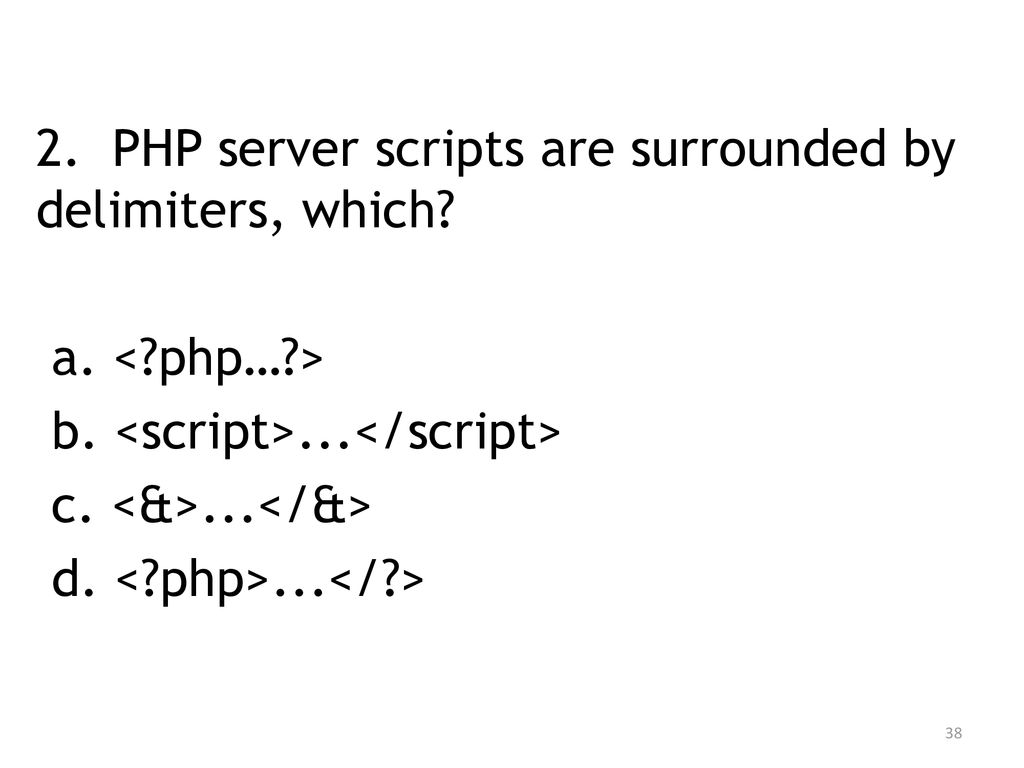Hey there! Let's talk about PHP, a language used to create dynamic websites. Think of websites that change based on who's visiting or what time it is. We are going to explore something important today!
What is PHP?
PHP, which stands for Hypertext Preprocessor, is a scripting language. It's mainly used for web development. It runs on a web server, processing requests and generating content. Imagine a restaurant's kitchen; PHP is the chef preparing your meal (the webpage) based on your order (the request).
Websites built with PHP can do all sorts of cool things. They can interact with databases, handle user input, and create personalized experiences. Think of Facebook, where your news feed is unique to you. PHP helps make that happen.
Delimiters: The Start and End Markers
Now, let's talk about delimiters. Delimiters are special characters that mark the beginning and end of a PHP code block. They tell the server, "Hey, this is PHP code; treat it as such!" It's like putting your PHP code in a special container. Without delimiters, the server wouldn't know what to do with your PHP instructions.
Think of it like a play. The stage directions are for the actors and stage crew, but the audience shouldn't see them or hear them spoken aloud. The delimiters are like the curtains that separate the performance (PHP code) from the rest of the script (HTML).
The Opening Tag: <?php
The opening delimiter for PHP code is <?php. This tag signals the beginning of a PHP block. The web server will then process everything following this tag as PHP code. It is like saying "Attention! PHP code starts now!".
Imagine you're writing a letter. You might start with "Dear [Name],". The <?php tag is like the "Dear [Name]," for PHP code; it announces the start of the PHP section.
The Closing Tag: ?>
The closing delimiter for PHP code is ?>. This tag signals the end of a PHP block. The server knows to stop interpreting the code as PHP at this point. This is like saying "Okay, PHP code ends here!".
Continuing with the letter analogy, the closing tag is like "Sincerely," or "Best regards,". It marks the end of your message, telling the recipient that you're finished writing PHP code.
PHP Code in the Middle
Inside the <?php and ?> tags, you'll find your actual PHP code. This is where all the magic happens! The code can include instructions for displaying content, performing calculations, interacting with databases, and much more. It is the heart of your PHP program.
Consider a simple example. You want to display the current date on your webpage. You would use PHP code within the delimiters to achieve this. The code would retrieve the date from the server and format it for display. It is like fetching the ingredients from the fridge to cook the meal.
Example: A Simple PHP Script
Let's look at a basic example:
<?php
echo "Hello, world!";
?>
This snippet will output "Hello, world!" to the browser. The echo command is a PHP function that displays text. Notice how the entire PHP code is enclosed within the <?php and ?> tags. This simple script is the most basic demonstration of the delimiters in action.
Imagine you are asking your friend to repeat what you say. The <?php tag tells your friend "Listen to me" and ?> tells them "Stop listening to me". Everything you said between the tags is what your friend will repeat (echo).
Mixing PHP and HTML
One of the powerful features of PHP is its ability to be embedded within HTML. This allows you to create dynamic web pages that combine static content (HTML) with dynamic content (PHP). Using PHP in this manner becomes very easy.
Imagine you want to display a personalized greeting on your webpage. You could use PHP to retrieve the user's name from a database and then embed it into an HTML paragraph. This can be done by using the delimiters around the PHP code that retrieves the name.
For example:
<html>
<body>
<h1>Welcome!</h1>
<p>
<?php
$name = "John"; // Let's pretend we got this from a database.
echo "Hello, " . $name . "!";
?>
</p>
</body>
</html>
This would output:
Welcome!
Hello, John!
. See how the PHP code is neatly tucked away within the <?php and ?> tags inside the HTML. It merges the welcome banner from HTML with the personalized greeting from PHP.Why Are Delimiters Important?
Delimiters are crucial for several reasons. They tell the server which parts of the file to process as PHP code. Without them, the server would treat the PHP code as plain text. It ensures that both the PHP and HTML are correctly processed.
Imagine you are speaking two languages, English and French. The delimiters are like switching between the two languages. They tell the listener when you are speaking English and when you are speaking French.
Furthermore, delimiters allow you to seamlessly integrate PHP code into your HTML structure. They create a clear separation between the two languages, making your code more readable and maintainable. It is like having separate rooms in a house for different activities; PHP and HTML each have their own space.
Common Mistakes
Forgetting delimiters is a common mistake. This will result in the PHP code being displayed as plain text in the browser. It will prevent the PHP code from being executed.
Make sure to always include both the opening and closing delimiters when writing PHP code. It is as simple as always wearing your seatbelt in a car.
Another common mistake is using incorrect delimiters. Ensure that you are using the correct tags: <?php and ?>. Make sure that you don't mix them up with other tags by accident.
In conclusion, understanding delimiters is fundamental to writing PHP code. They are the key to unlocking the power of dynamic web development. Always remember to use them correctly! Keep them in your mind while writing PHP code.

